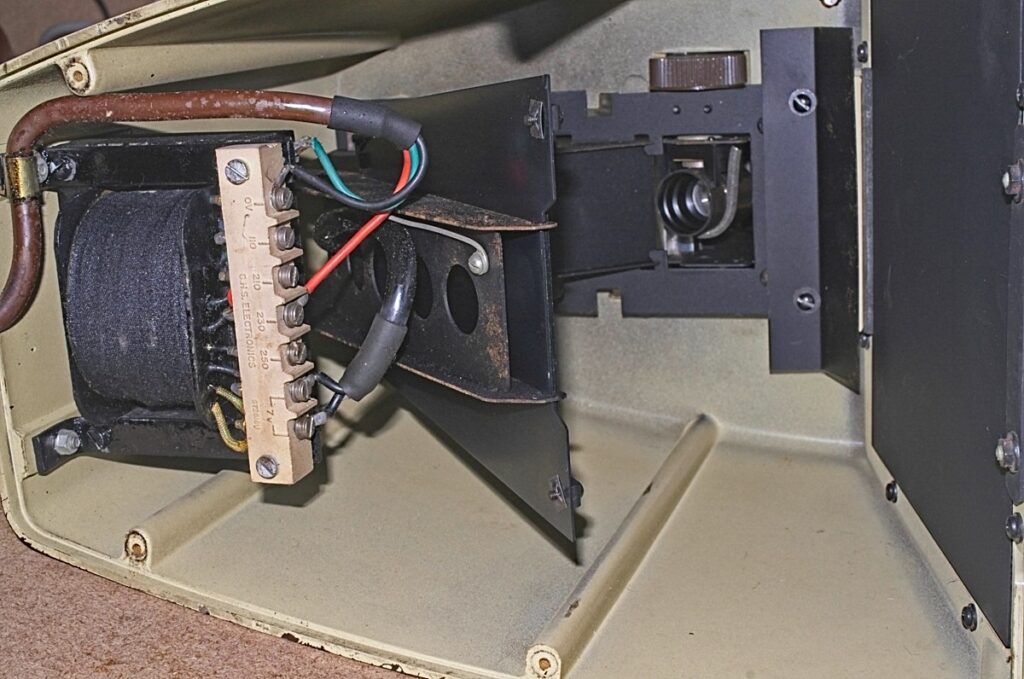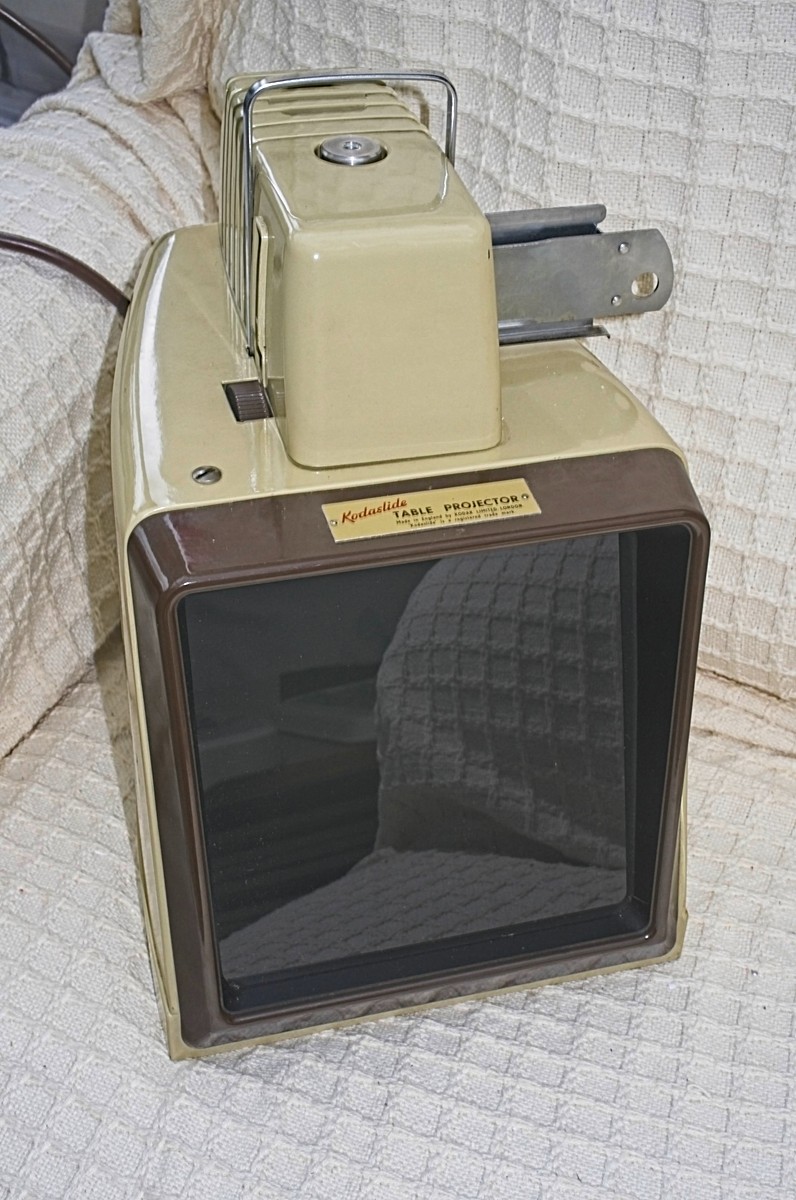Simple Kodak Kodaslide table projector from the 1950s
The Kodak Kodaslide table projector which is featured in this post, was an inexpensive way people could view their colour slides without having to set up a screen and darken the room. Instead, it is a table-top viewer that makes it easy to quickly view your latest film just back from the development lab.
My Kodak Kodaslide table projector.
I actually bought my Kodak Kodaslide with the intention of using it to help me find photos to publish on the photo section of the Everything Vintage site. Although I have an LED light box, which allows me to select slides, I find I can’t see any proper detail without using a loupe, so I hoped buying this table-top viewer would make it easier.
I think that may work, but I’m going to need to change the original filament bulb to a modern LED to get a higher lever of brightness to make it usable.
The Kodaslide was purchased for a few pounds from eBay UK and I found the best example I could from the 4 or 5 that were available when I first started looking for one. It’s in reasonable condition, the only thing I could complain about is that the image isn’t very bright, but I think that’s probably due to the reflective surfaces needing a good clean.
Photos of the Kodak Kodaslide projector.
The gallery below shows some photos of the Kodak Kodaslide table-top projector.






Description of the Kodak Kodaslide
Operation
I assumed that the name ‘Kodaslide’ applied only to this model of projector, but after a bit of research on Google I found that it was the name used by Kodak for a whole range of slide projectors in the 1950s and 60s. These ranged from conventional projectors with a screen, this table-top style and also hand held viewers that you held up to the light.
Anyway, the Kodaslide table-top projector I’m looking at here is a remarkably simple device.
The light source is a 6 watt filament lamp which sits at the end of the light box on the top of the unit with a reflector behind it to reflect the light forward. In front of the lamp are a pair of lenses that focus the light beam onto the slide which follows the lens.
The slide is pushed into place by a simple slide carrier that allows just one slide to be loaded up. It’s operated by pulling it out of the light box to the right, dropping a slide in with the emulsion side towards you and the image upside down, and then pushing the slide carrier in. When it’s next withdrawn, the slide is left in place and illuminated by the light beam from the bulb.

When the next slide is dropped in, the slide that’s currently being projected is pushed out of the left of the unit and replaced with the one just added.
Anyway, back to the operation.
The light from the illuminated slide is reflected down, via a mirror at 45° angle where it is reflected again by a larger mirror at 45° angle to be projected on to the screen. The focus adjustment is a rotary wheel next to the light box that allows the image to be adjusted until sharp.
In order to made sure the maximum brightness was applied to the image, there is a knurled knob behind the lamp that allows it to be moved to get the maximum brightness.
My Assessment
In use, I found a few things that made it less than easy to see the image on the slide.
First the light level is too low which is a common problem with most vintage projection systems. The lamp technology at the time couldn’t produce light without also producing heat, so the lamp was kept low enough to make sure the slide didn’t burn. I’m sure if I replace the lamp with a modern LED I can make the image brighter.
The other issue is the viewing angle of the screen. In order to make the maximum of the brightness that is available, the screen needs to be viewed straight on – deviation of only a few degrees starts to really cut down the image brightness.
I suspect to be fair I’m judging the projector too harshly – I guess it was not designed to be used in normal daylight but in a darkened room, and under those circumstances it is much better.
On the positive side, I think the unit will be useful to me to pick images for the Lost Photos part of the site, and I could see that it would also be useful for any Colour Slide enthusiast who wanted a quick look through some slides without setting up a full projector and screen. Also, there is so little to go wrong in the projector that I’m guessing it will be quite reliable.
Discover more from Everything Vintage
Subscribe to get the latest posts sent to your email.


Could you please tell me how to take the top off as the bulb needs replacing and the lens has fallen out on mine
Ta
Patrick